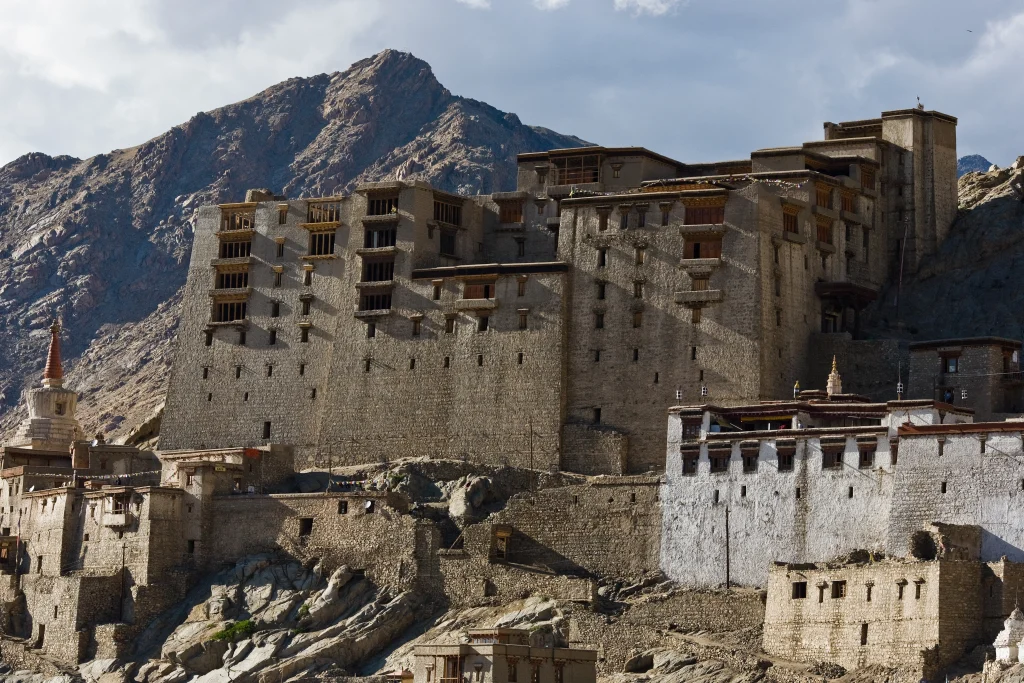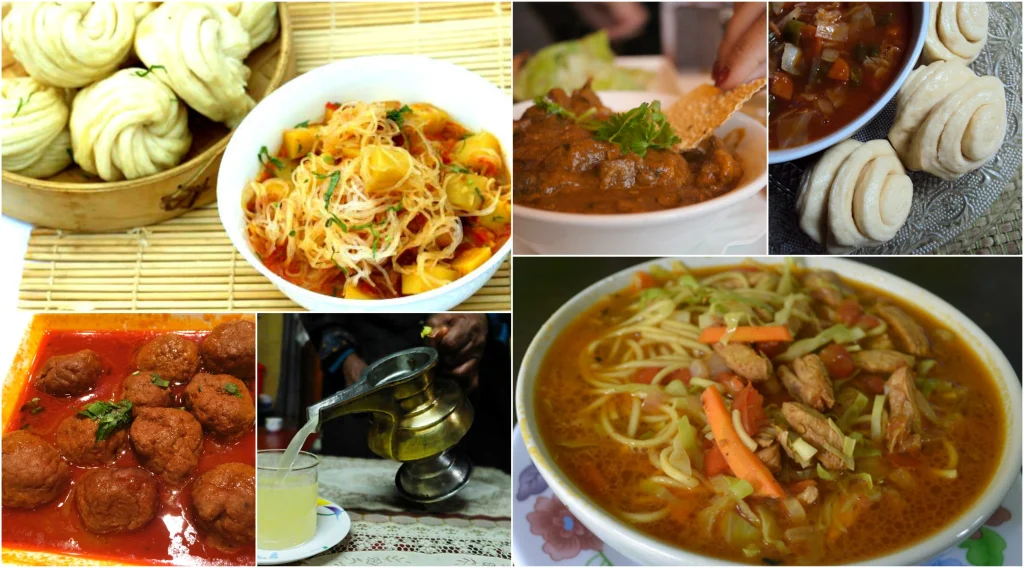The Ultimate Guide to Leh Ladakh Tourism: Explore the Land of High Passes
Leh is a beautiful town located in the Indian state of Jammu and Kashmir. It is a popular destination for tourists who want to experience scenic beauty and adventure activities in Leh Ladakh. The town offers breathtaking views of snow-capped mountains, clear blue skies, and serene landscapes. Visitors can indulge in a variety of adventure sports such as trekking, mountaineering, river rafting, and cycling. The town also boasts of rich cultural heritage and ancient Buddhist monasteries that are worth a visit. Overall, Leh is a perfect destination for nature lovers and adventure enthusiasts.
Ladakh is divided into two districts: Leh district and Kargil district. The former district features the famous town, “Leh,” which is a popular tourist destination due to the gorgeous monasteries surrounding, Shanti Stupa, cafes, and Leh Bazaar, which define the culture of the area.
Ladakh is a paradise for rafting and high-altitude trekking. Outside of the summer months, Leh Ladakh is unreachable by road. From about October to May, the route is completely closed, and the only way to get there is via plane. The Chadar walk on the ice Zanskar river takes place from January to February.
Ladakh is divided into two districts: Leh district and Kargil district. The former district features the famous town, “Leh,” which is a popular tourist destination due to the gorgeous monasteries surrounding, Shanti Stupa, cafes, and Leh Bazaar, which define the culture of the
area.
More About Leh Ladakh
History of Leh Ladakh

Leh Ladakh has a rich history that dates back to the 10th century. It was an important trading post on the Silk Route between India and China. The town was ruled by the Namgyal dynasty of Ladakh for centuries, and it became the capital of Ladakh in the 17th century. The Namgyal dynasty was known for its strategic alliances with the Mughals and the British. The Mughal Empire used Ladakh as a buffer zone to protect its empire from the Chinese, while the British used Ladakh as a gateway to Central Asia.
Leh was also an important centre of Buddhism and had many monasteries, including the famous Hemis monastery. The Hemis monastery is the largest and richest monastery in Ladakh and is known for its annual Hemis festival. The best time to visit the Leh festival is celebrated on the 10th day of the Tibetan lunar month and attracts thousands of tourists from all over the world.
In the 19th century, Leh came under the control of the Dogra dynasty of Jammu and Kashmir, and it remained a part of the state after India’s independence in 1947. The Dogra dynasty was known for its contribution to the development of Ladakh, including the construction of roads, schools, hospitals, and other infrastructure.
In 1974, the Indian government opened up the region to tourism, and Leh has since become a popular destination for adventure seekers and nature lovers. Today, Things to Do in Leh is a vibrant town that celebrates its rich cultural heritage and natural beauty. The town has undergone significant development in recent years, with the construction of new hotels, restaurants, and tourist facilities. Despite the changes, Leh has managed to maintain its unique charm and character, making it a must-visit destination for anyone interested in
history, culture, and adventure.
Restaurants and local food in Leh Ladakh

Leh offers a variety of local cuisines that are a must-try for food lovers. Some of the popular dishes include Thukpa, a noodle soup with vegetables or meat, Momos, steamed or fried dumplings filled with vegetables or meat, and Chhurpi, a hard cheese that is often used in local dishes. Visitors can also try the famous Ladakhi tea, made with butter and salt, and Chang, a local beer made from barley. As for restaurants, there are many options available in Leh, ranging from small local eateries to high-end restaurants serving international cuisines. Some of the popular restaurants in Leh include Gesmo Restaurant, Bon Appetit, and Lamayuru Restaurant. Visitors can also enjoy a meal with a view at one of the many rooftop cafes in the
town.
Ladakh’s Climate
The Tibetan word ‘Ladakh,’ also known as ‘La-drags,’ means ‘the land of high passes.’ Ladakh is a high-altitude cold desert with an average elevation of over 10,000 feet and numerous snow-capped peaks and glaciers.
The region has a distinct climatic condition. Ladakh, one of the world’s highest areas, sees sub-zero temperatures during the winter. During the winter, nighttime temperatures rarely fall below -5°C. Winters remain cold, with snowfall prevalent between December and February, making this the best season to visit Ladakh if you enjoy snow.
This region has evolved as one of India’s most popular tourist attractions due to its differences in height, climate, culture, and history from the mainland.
Conclusion:
Leh Ladakh is a destination that every traveller should experience at least once in their lives. From its rich cultural legacy to its beautiful landscapes, Best Places in Leh Ladakh delivers an experience unlike any other. The adventurous sports, unique cuisines, and old monasteries all contribute to the allure of this lovely town. The proposed schedule gives tourists a taste of what they may anticipate during their stay in Leh Ladakh, but there is so much more to see and do. Leh Ladakh is ready to welcome guests from all over the world and give them a
fantastic vacation thanks to its open tourism policy.
Suggested Itinerary for Leh
Day 1: Arrival in Leh Rest for acclimatization Explore the local market
Day 2: Leh Sightseeing Visit Leh PalaceVisit Shanti StupaVisit Hall of Fame
Day 3: Drive to Nubra Valley Stop at Khardung La PassVisit Diskit Monastery Enjoy the sand dunes at Hunder
Day 4: Return to Leh Visit Hemis Monastery Visit Thiksey MonasteryVisit Shey Palace
Day 5: Visit Pangong Lake Drive through Chang La Pass Enjoy the scenic beauty of Pangong Lake
Day 6: Departure from Leh
People also ask about Leh Tourism
1. Is tourism in Leh Ladakh currently open?
Leh Ladakh is open to visitors, and those with valid permission can still visit the region’s top tourist destinations, including Pangong Lake, Changla Pass, Khardungla Pass, Nubra Valley, Sham Valley (Sangam, Magnetic Hill, etc.).
2. Which food is popular in Ladakh?
Without a doubt, the most popular meal in Ladakh is momos. It is a dough-wrapped dumpling that is filled with meat or vegetables. Although locals like their momos filled with minced beef, vegetarian momos are equally delicious. These dumplings come with dipping sauce and can be eaten fried or steam-cooked.
3. What is Ladakh's biggest plant?
The major fruit trees in Ladakh are apricot and apple trees, which are extensively planted in the region’s milder lower regions, especially in Sham, Nubra, and Kargil. The apricots are traditionally sold in the markets of Leh and Kargil after being sun-dried on rooftops or on big stones.
4. Which language is used in the Ladakh region?
Located in the Indian state of Ladakh, the Ladakhi language is a Tibetan language. In the Leh district which is dominated by Buddhists, it is the most common language. Despite being a part of the Tibetan language family, Standard Tibetan and Ladakhi cannot be mutually understood.
5. What are the famous Ladakh sweets?
Phirni: The Sweet Delight of Ladakh. People in Ladakh have a fondness for the sweet dessert phirni. Made with milk, sugar, and ground rice, it’s a delicious and creamy delicacy.
6. What does Ladakh's dry fruit mean?
The most frequent fruit in the Ladakh province in Northern India, these apricots are sometimes referred to as “lal khubani” or “jardalu.”
7. What is the Ladakh flower?
In Ladakh, it’s also called Bhoti ‘Tsersnon’. It is employed in the traditional medical system of Sowa-Rigpa (sometimes called the Amchi system) along with Juniperus polycarpos, popularly known as Bhoti ‘Shukpa’. The Ladakh administration has suggested both as the state tree and flower, respectively.
8. How is the oxygen level in Leh maintained?
In addition to taking paracetamol, you should drink a lot of water. Go to a lower altitude right once if your AMS symptoms are more severe. Use the oxygen cylinder you leased if you want to lessen your altitude sickness symptoms.
